“This is like a scene from Goldilocks!” said one visitor after witnessing four charming pandas enjoying a feast of bamboo sticks at a miniature picnic table, stealing the hearts of visitors and viewers alike in Chongqing Zoo, China.
The bears, Shuangshuang, Chongchong, Xixi, and Qingqing, took their seats around the wooden table, peeling and munching on fresh bamboo shoots as part of a Mid-Autumn Festival celebration, in a scene that looked straight out of a fairytale book.
The playful event didn’t stop there, as after their meal, the pandas went to play, sliding down a nearby slide headfirst, melting the attendant’s hearts.
“Pandas are just the best, we can’t help but love them!” wrote one viewer.
Pandas melted the hearts of visitors at Chinese zoo after sitting at a table to eat bamboo in a scene that seemed taken straight out of the Goldilocks fairytale
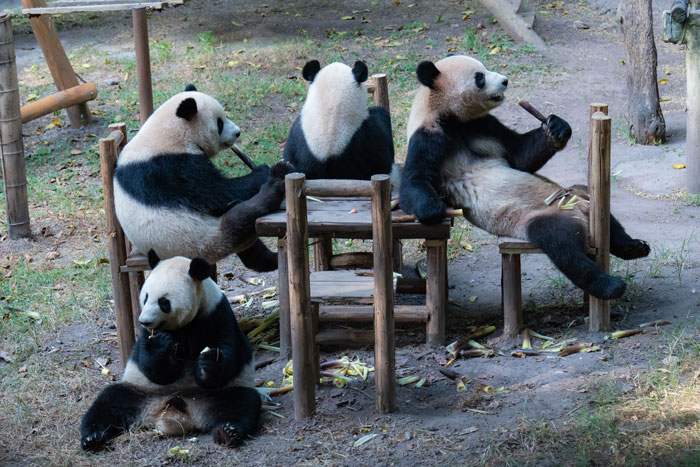
Image credits: NurPhoto / Getty
Located in southwest China, the zoo takes care of 23 pandas, including the four stars of the fairytale scene. The Congqing reserve has long been known for its wholesome residents, regularly uploading videos of their day-to-day activities.
The human-like way in which the bears gathered at the table and chairs to snack on bamboo was so uncanny, some viewers even speculated whether the animals were actually humans in costumes putting on a show.
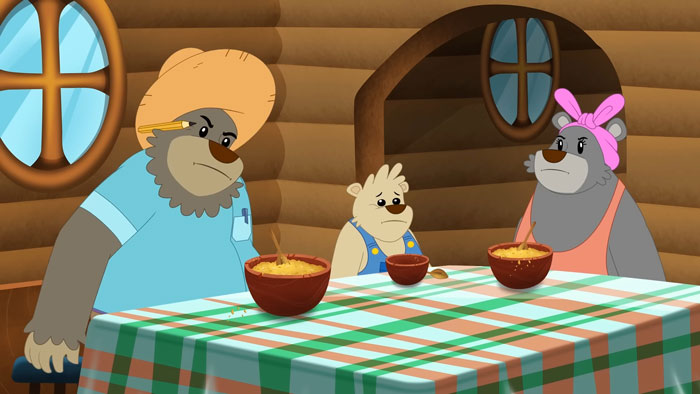
Image credits: English Fairy Tales and Stories
“They have better table manners than most of my dates,” joked one.
“Are we sure they are not men in suits?” asked another.
Shuangshuang and Chongchong, male twins, along with female twins Xixi and Qingqing, were the stars of this Mid-Autumn Festival feast, showing off their playful and social nature.
With their round bodies, big eyes, and playful demeanor, pandas are inherently cute to humans. Scientists call this phenomenon “neoteny”
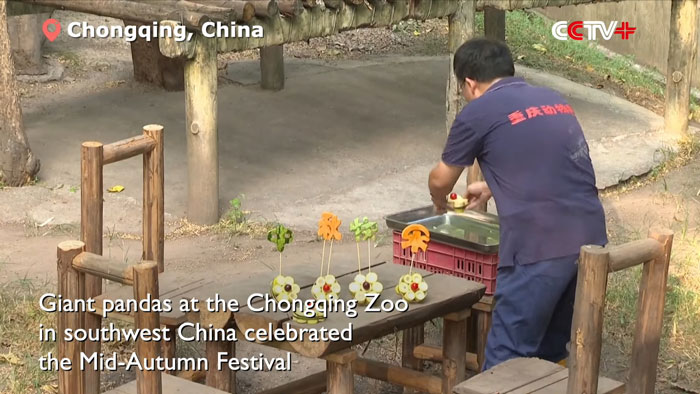
Image credits: CCTV Video News Agency
Why are pandas so cute to us? Turns out neuroscientists might have the answer.
Coined as “neoteny” in 1885 by German zoologist Julius Kollmann, the term refers to a biological process through which an animal slows its development, and thus, retains features normally associated with children well into adulthood.
Neoteny is a prevalent feature of our species’ development, as humans are the most neotenous of all primates.

Image credits: CCTV Video News Agency
An easy way to understand this phenomenon is comparing the size of a wolf’s skull compared to that of a poodle, the more domesticated the animal becomes, the more dependant it is on the care of others and thus, the more their features resemble that of children or, in this case, pups.
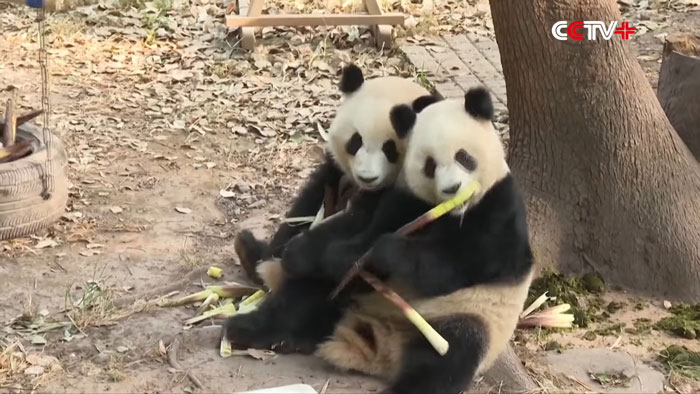
Image credits: CCTV Video News Agency
Studies on the evolutionary merits of cuteness have theorized that it acts as a protective mechanism. Humans, as social creatures, have evolved to respond to childlike features in an animal with a need to protect and take care of it.
Pandas have evolved some features to protect themselves from harm but, coincidentally, those same adaptations make them look wholesome and cute to humans
But how does neoteny relate to pandas? As it turns out, their features are highly neotenous. In layman terms, they look like giant, fluffy baby bears, even in adulthood.
Their signature black “mask” around their eyes acts as a deterrent to potential predators, making them look scary and threatening. For humans however, whose brains are wired differently, it makes their eyes look bigger and has the opposite effect.
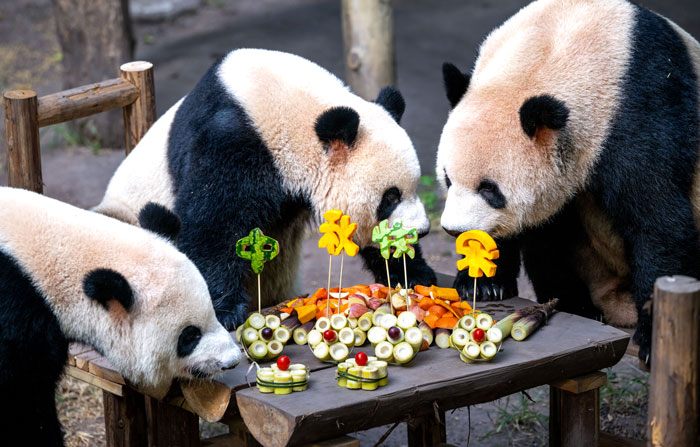
Image credits: VCG / Getty
Their round, soft bodies, and their propensity to roll around remind us of how human babies look, with short, stumpy arms and legs, and big heads. Their anatomy is also very similar to that of primates in certain aspects, making them look very similar to us when performing certain actions.
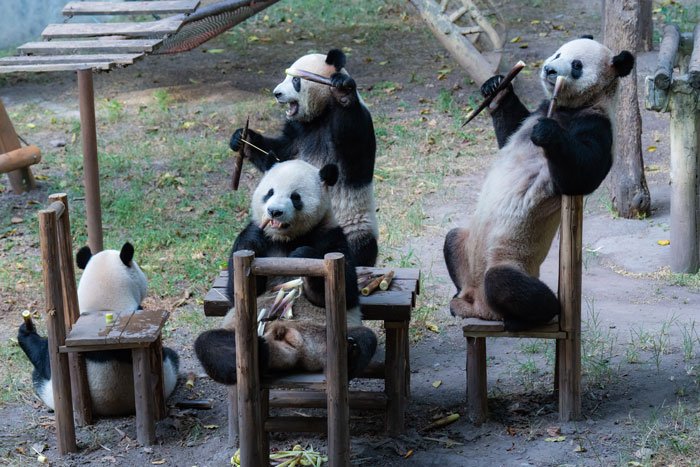
Image credits: CFOTO / Getty
“They eat sitting up using their hands and their special pseudo thumb, which is actually a modified wrist bone,” explained Ron Swaisgood, Director of Applied Animal Ecology, San Diego Zoo Institute to the BBC.
“Our own young have characteristics that we humans respond to such as a big, round head, large eyes, a high forehead, and a roly-poly body. We are programmed to respond to these babyish looks. Babies just make us like them and want to care for them. It is part of our human makeup,” he added.
Netizens continued to argue whether the animals featured in the clip were humans in costumes, while others shared their love for these cuddly creatures
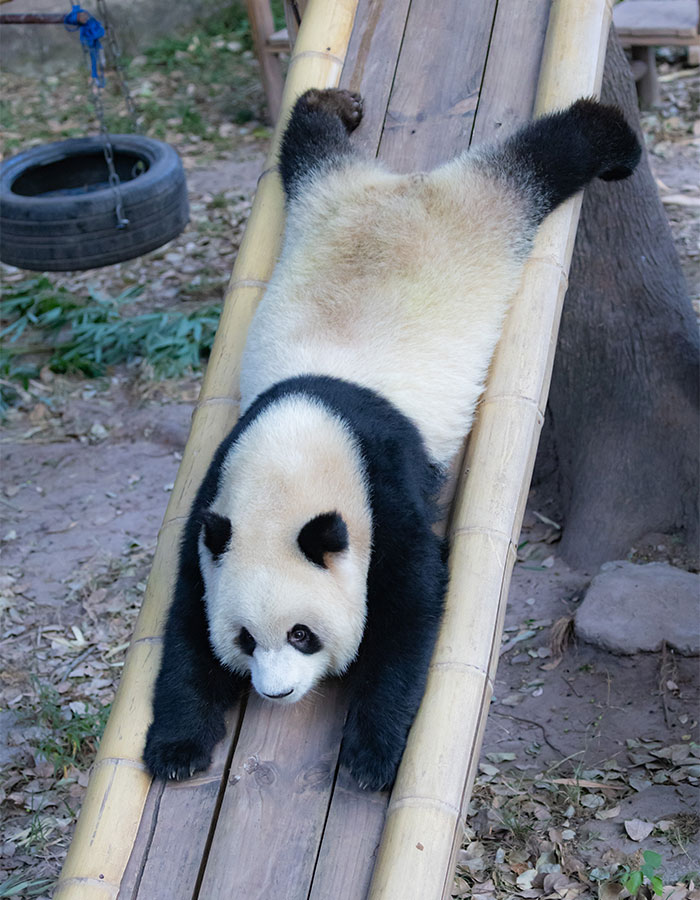
Image credits: CFOTO / Getty
“Rubbish! These are just blokes in suits!” a reader argued.
“These pandas are just too perfect, they’ve got to be humans in costumes,” another theorized.
“If I could choose another career I’d love to be a baby panda attendant,” one viewer said. “I’ve watched videos over the years and they are so entertaining and yes, humanlike. Pandas are so unique”
“I read about this one panda that makes a grimacing face when it breaks bamboo to eat. He does this because his human trainer taught him how to break bamboo and it was really hard for the human so he would make that face. They are adorable,” recounted another.
“Pandas are just the best!”
“Pass the bamboo please!” wrote one fan, as others joined in to marvel at the pandas’ cuteness






















 English (US) ·
English (US) ·